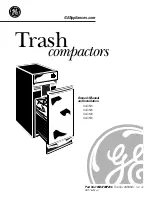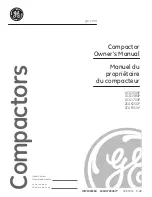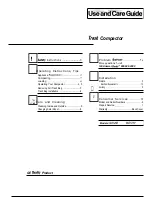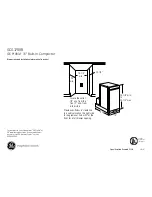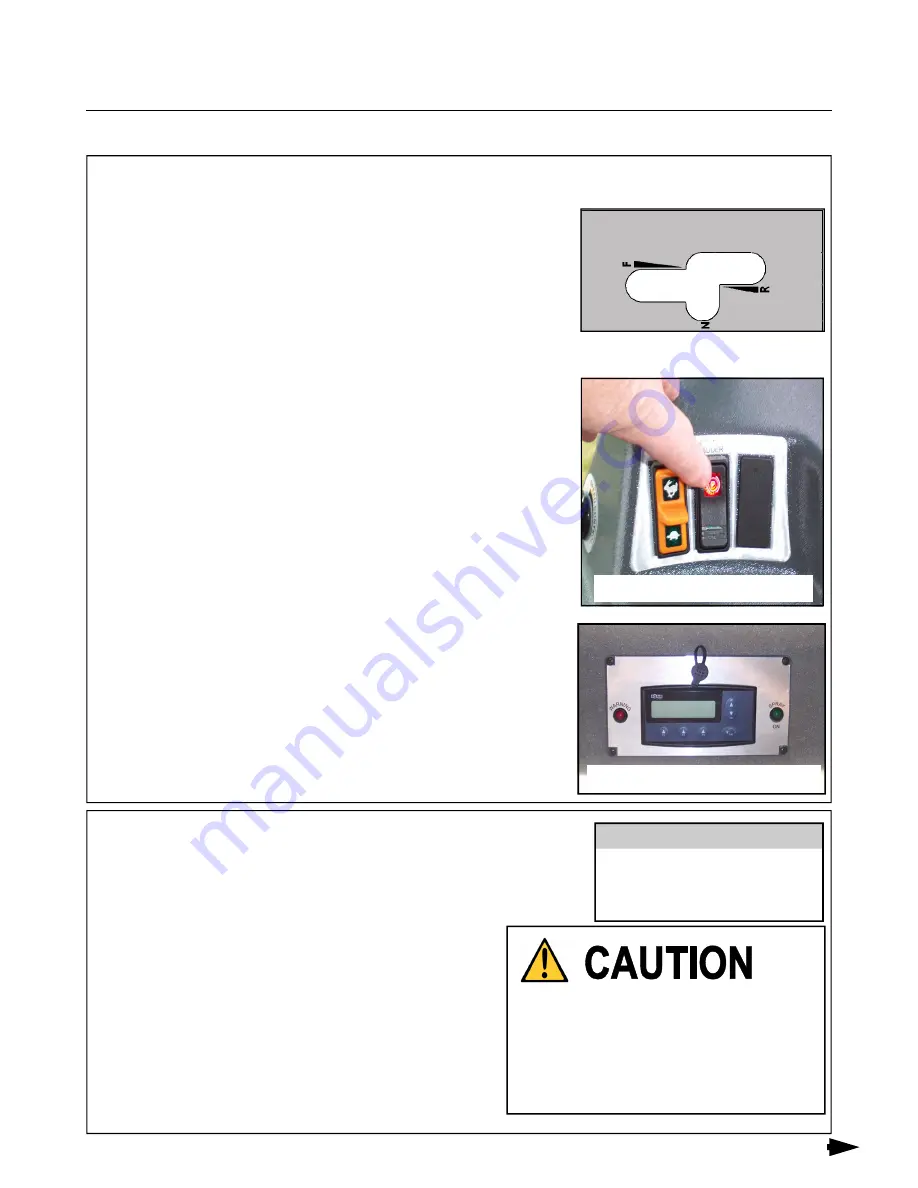
IV.
OPERATING SYSTEMS
37
B. HYDROSTATIC DRIVE SYSTEM
STARTING THE ENGINE-
1. Position the hydrostatic control lever to “N” (neutral) position (fig. 37-
1).
2. Put the parking brake switch( fig. 37-2) to the ON position (see be-
low). Turn the ignition key switch to the on position, wait for the “wait
to start” light in the message center (fig. 37-3) to go out before en-
gaging the starter. If the engine fails to start after 15 seconds, turn
the key to OFF, wait one minute and repeat the procedure. If the
engine does not start in three attempts, check the fuel supply sys-
tem. Absence of blue or white exhaust smoke during cranking indi-
cates that no fuel is being delivered.
3. Observe the warning lights on the message center after start up. If
any functions do not operate, shut off engine and determine the
cause.
4. Always allow at least a five minute warm-up period before operating
the engine at high RPM. This means that the engine must reach
operating temperature and oil pressure must stabilize in the normal
operating range before it is run faster than an idle (1000 RPM or
less).
FIG. 37-1
FIG. 37-3
FIG. 37-2
OPERATING SYSTEMS
PARKING BRAKE-
The parking brake will engage if the charge
pressure falls below 150 PSI or the engine is shut off. To engage the
brakes manually, press the top of the PARKING BRAKE/LADDER switch
(fig. 37-2) located on the side console.
To disengage the brakes, press the bottom of the switch.
Always turn the brakes off before moving the sprayer.
The brake switch must be engaged to lower the ladder
and to run the side-fill or pressure washer. The ladder will
automatically lower when brake switch is pressed (see page
39)
Activating the brake switch
while the machine is moving is
potentially hazardous to the
operator and the sprayer.
NOTE:
The parking brake will not
engage over 1 mile per hour.


































